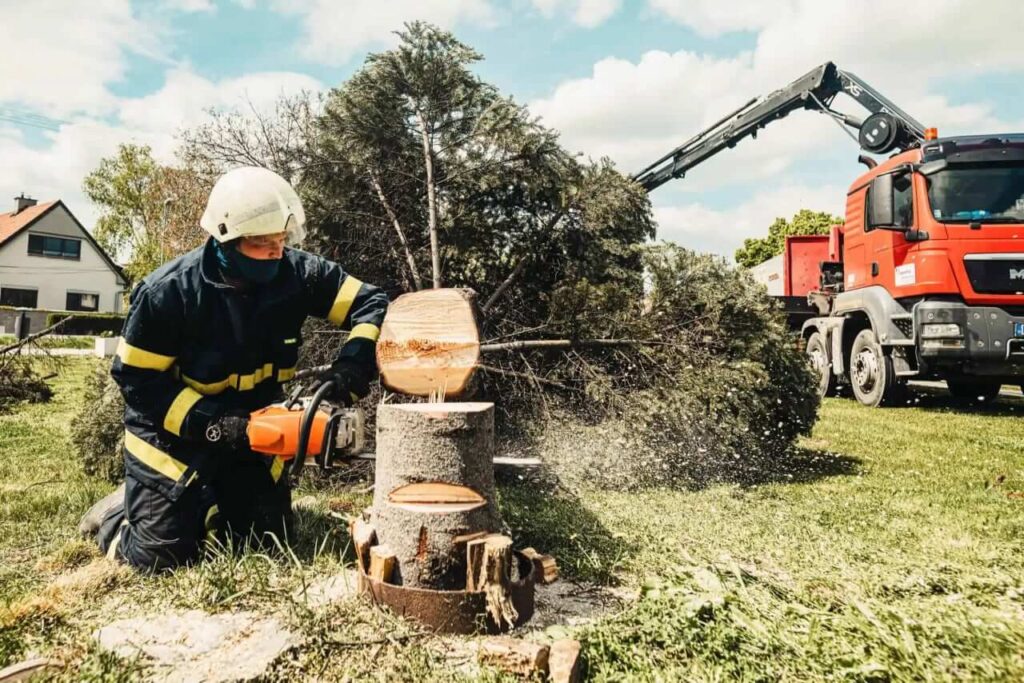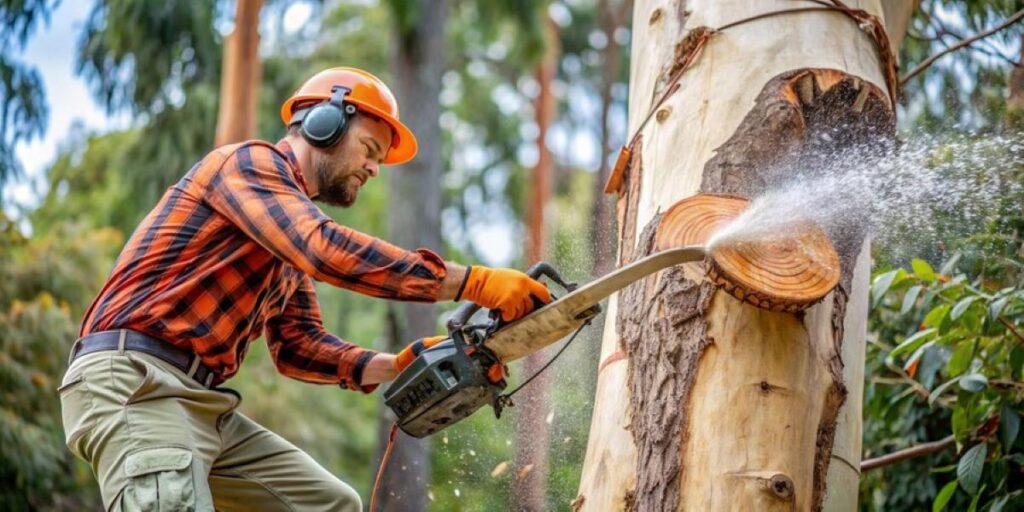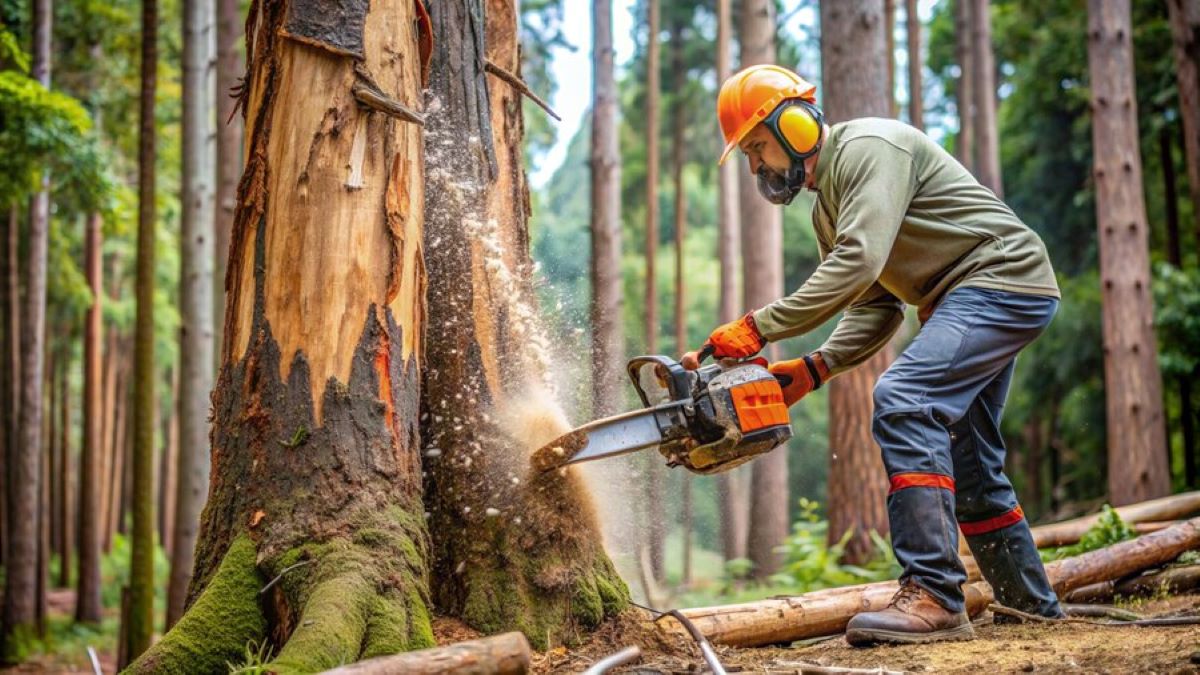What You Should Know About Council Approval for Tree Removal
Removing a tree from your property without proper council approval can result in substantial fines, sometimes reaching tens of thousands of dollars. Before you search for “tree removal near me” and hire a contractor, understanding local tree removal rules is essential.
Council approval for tree removal near me searches can vary dramatically across Australia. What’s permitted in one suburb may be strictly prohibited in another, even within the same city. Each local council operates under different environmental planning policies and development control plans that determine which trees require protection.
This guide walks you through the complete process of checking whether you need council permission before removing any trees on your property. You’ll learn how to identify your local council’s specific regulations, understand when permits are mandatory, discover potential exemptions, and navigate the application process if approval is required. Taking these steps before hiring tree removal services ensures you remain compliant with local laws and avoid costly fines while protecting the environment.
How to Identify Your Local Council and Understand Their Tree Removal Regulations?
What’s the quickest way to find your local council?
Your local council can be identified through online government portals or by checking your rates notice. Most states offer dedicated websites where you enter your property address to instantly reveal your property council jurisdiction.
Where else can I find this information?
Your property documents, including title deeds and council rates notices, clearly state which local authority governs your area. Local government websites typically feature postcode search tools that identify local authority for tree removal matters within seconds.
Why does understanding your specific council’s rules matter?
Tree removal laws differ dramatically between states and individual councils. A tree requiring no permit in one suburb might be strictly protected just streets away. Each council maintains unique development control plans that specify which trees need approval before removal.
What types of trees typically require permits?
Most councils mandate permits for:
- Trees exceeding specific height thresholds (commonly 5-10 metres)
- Protected native species
- Trees within heritage conservation areas
- Significant trees listed on council registers
- Vegetation communities identified in environmental planning policies
How accessible are these regulations?
Council websites publish their tree preservation orders and development control plans online. These documents outline exact criteria triggering permit requirements, saving you time before starting any tree work.
When Is Council Approval Required for Tree Removal?
When is approval needed for tree removal? Most councils mandate tree removal permits when trees exceed specific height or trunk diameter thresholds, typically around 3-5 metres tall or 300mm trunk circumference.
Protected or significant trees almost always require approval regardless of size. These include:
- Heritage-listed trees documented in council registers
- Native species protected under environmental legislation
- Trees in conservation zones or environmentally sensitive areas
- Street trees owned by council
Tree removal permits become necessary when trees form part of a vegetation community or contribute to local biodiversity corridors. Councils assess each application against their Development Control Plan and State Environmental Planning Policies.
The species itself can trigger permit requirements. Certain native trees, endangered species, or trees providing critical habitat for wildlife face stricter regulations. Even on private property, removing these trees without approval can result in penalties exceeding $10,000.
Dead or dangerous trees may still require assessment documentation, though councils often fast-track these applications when safety concerns are properly evidenced.
Are There Any Exceptions or Special Schemes for Tree Removal Without Approval?
Yes, there are several exemptions that allow tree work without formal council approval. These tree removal exceptions to council approval can save property owners time and application fees when specific conditions are met.
NSW’s 10/50 Vegetation Clearing Scheme permits property owners in designated bushfire-prone areas to clear vegetation within 10 metres of their home and thin native vegetation between 10 and 50 metres without council consent. This scheme aims to reduce bushfire risk while still protecting the environment.
Most councils, such as Mosman, have standard exemptions for certain tree management scenarios. For instance, you might find useful information on the Tree management guidelines provided by your local council which could clarify some common misconceptions.
Generally, standard exemptions include:
- Dead or dying trees that pose immediate safety risks
- Minor pruning that removes less than 10% of the tree canopy
- Emergency removal following storm damage or dangerous structural failure
- Small trees below height thresholds (typically under 3-5 metres)
- Exempt species listed as environmental weeds or invasive plants
Each council has its own list of exemptions, so it’s important to check your specific local requirements before doing any tree work.
What Information Do I Need to Provide When Applying for Tree Removal Approval?
Application requirements for tree removal permits typically demand comprehensive documentation about the trees in question. Most councils require you to submit a detailed description including the species, height, trunk diameter, and exact location of each tree on your property.
Your application must include clear reasons justifying the removal. Councils expect specific evidence rather than general complaints about inconvenience. You’ll need to explain whether the tree poses safety risks, causes structural damage, or has died.
Supporting documentation strengthens your application:
- Recent photographs showing the tree from multiple angles
- Site plans or maps marking the tree’s position relative to buildings and boundaries
- Arborist reports if claiming health or structural concerns
- Evidence of damage such as photos of cracked foundations or damaged pipes
Some councils provide standardised application forms through their websites, whilst others accept written submissions. Check your local council’s specific requirements, as missing documentation can delay processing or result in rejection.

What Reasons Are Usually Accepted or Rejected by Councils for Tree Removal?
Does your council accept safety concerns as valid grounds for removal? Dead, diseased, or structurally unsound trees typically receive approval, as these pose genuine risks to property and people. Councils also accept fire hazard arguments, particularly in bushfire-prone zones where trees create dangerous fuel loads near buildings.
Accepted reasons for tree removal permits include:
- Trees with significant decay or fungal infections compromising structural integrity
- Branches overhanging buildings with documented risk of falling
- Root systems causing proven structural damage to foundations or underground services
- Trees within designated bushfire zones creating unacceptable risk
What reasons will councils reject? Applications citing leaf litter, shade, blocked views, or minor root interference rarely succeed. Councils view these as normal characteristics of tree ownership rather than legitimate removal grounds. Allergies, fruit drop, or bird attraction also fail to meet approval criteria. Even claims of potential future damage without current evidence typically face rejection, as councils prioritise preservation unless clear, immediate danger exists.
How Can I Use Council Checklists or Self-Assessment Tools to Determine Approval Needs?
Most councils provide self-assessment tools for tree removal permits directly on their websites, allowing property owners to quickly determine whether they need formal approval. These digital portals typically ask straightforward questions about your tree’s location, species, height, and trunk diameter.
The online checklists guide you through key criteria:
- Tree measurements (height and trunk circumference at specific points)
- Distance from property boundaries or structures
- Whether the tree appears on any protected species lists
- Your property’s zoning classification
- Specific exemptions that might apply to your situation
Many councils have developed interactive decision trees that provide instant answers based on your responses. Some local authorities offer downloadable PDF checklists you can complete at home whilst measuring your trees. These tools reference your council’s specific tree preservation orders and development control plans, eliminating guesswork about Tree Removal Near Me: How to Check if You Need Council Approval First. The assessment usually takes 5-10 minutes and clearly indicates whether you must submit a formal application or can proceed without approval. Click here to get more about tree removal close to a Boundary fence.
What Are the Typical Fees and Processing Times Involved in Tree Removal Applications?
Most councils charge application fees ranging from £100 to £500 depending on the complexity of your request and the number of trees involved. Metropolitan councils often charge higher fees than regional areas, with some charging per tree whilst others apply a flat rate for the entire application.
Tree removal fees and processing time for permits vary significantly between councils:
- Simple applications for single trees typically cost £150–£250
- Multiple tree removal requests may reach £400–£600
- Heritage or significant tree applications often incur premium fees
Processing times generally span 4 to 8 weeks from submission to decision. However, average permit processing turnaround times can be longer in councils experiencing high application volumes, extending this to 12 weeks. Complex cases requiring site inspections, arborist reports, or neighbour notifications add extra time to the assessment period.
Some councils offer expedited processing for urgent safety concerns, though additional fees apply. You can track your application status through most council online portals using your reference number.
What Should I Do If My Tree Removal Application Is Denied by the Council?
Can you challenge a council’s decision to deny your tree removal application? Yes, you have the right to appeal through formal channels if your application is rejected.
The appeal process after denied application for tree removal permits typically involves lodging a case with your state’s Land and Environment Court or equivalent tribunal. You must file your appeal within a specific timeframe—usually 28 days from receiving the council’s decision notice.
Your appeal should include:
- The original application documents and council’s refusal reasons
- Additional evidence supporting your case (arborist reports, structural engineer assessments)
- Documentation of any safety concerns or property damage
- Photos demonstrating the issue requiring tree removal
Legal representation isn’t mandatory but can strengthen your case, particularly when dealing with complex environmental regulations. Some councils offer mediation services before formal court proceedings, which may resolve disputes more quickly and affordably. Keep all correspondence with the council as this documentation becomes crucial evidence during appeals.
How Can Expert Advice Help When Structural Damage or Tree Health Issues Are Involved in My Case?
Certified arborists provide professional assessments that councils often require when you claim a tree poses structural risks or health concerns. These experts conduct thorough inspections using specialized equipment to identify diseases, decay, or root systems affecting foundations.
Arborist advice on structural damage claims related to tree removal strengthens your application by providing:
- Detailed reports documenting tree condition and safety risks
- Photographic evidence of structural issues or disease
- Professional recommendations for removal or alternative solutions
- Independent verification that councils trust during decision-making
When you suspect a tree threatens your property, an arborist report becomes essential documentation. Councils rarely accept homeowner observations alone, particularly when trees appear healthy externally. Professional assessments reveal hidden problems like internal decay, root plate instability, or fungal infections that justify removal.
Engaging qualified arborists early prevents application rejections and potential appeals. Their expertise helps you understand whether removal remains your only option or if pruning and maintenance could address concerns whilst preserving the tree.

Conclusion
Tree Removal Near Me: How to Check if You Need Council Approval First requires careful attention to local regulations. Unauthorised tree removal can result in fines reaching thousands of pounds, making compliance essential for property owners.
Before proceeding with any tree work, complete this final checklist before removing a tree near you:
- Contact your local council to verify permit requirements
- Assess whether your tree falls under protected species or size thresholds
- Gather necessary documentation including photos and removal justifications
- Consult a certified arborist for professional assessment
Take action today: reach out to your council’s planning department and engage qualified tree professionals. This proactive approach protects you legally whilst ensuring responsible tree management on your property.
Quick FAQs: Council Approval for Tree Removal
Yes, most trees above certain height or trunk size, native species, heritage trees, or trees in conservation zones require permits.
2. Are there exemptions?
Minor pruning (<10% canopy), small trees under height limits, dead/dangerous trees, or invasive species may not need approval. Some bushfire-prone areas have special 10/50 vegetation clearing rules.
3. What documentation is required?
Site plan, tree photos, species, measurements, arborist reports (if claiming health/damage concerns), and property owner consent.
4. What reasons do councils accept for removal?
Safety risks, structural damage, disease, fire hazards, or dead/dying trees. Leaf litter, shade, blocked views, or minor root interference are usually rejected.
5. How long does approval take and what are fees?
Applications take 4–8 weeks (sometimes longer) and cost £100–£500 depending on tree number and significance.
6. Can I appeal a denial?
Yes, through the Land and Environment Court or council mediation within the stated appeal period.
7. How can arborists help?
They provide professional assessments, document risks, and support council applications with credible evidence.
8. What’s the key takeaway?
Always check local council rules, gather proper documentation, and consult a certified arborist before removing any tree to avoid fines and legal issues.
